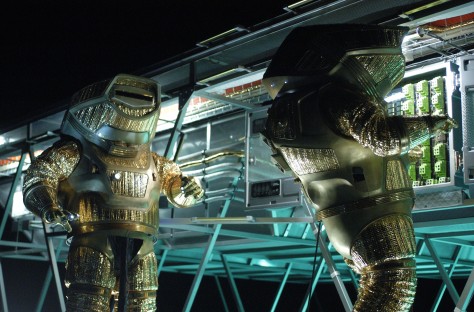By Dennis Hartley
(Originally posted on Digby’s Hullabaloo on November 3, 2007)

You’ve heard the expression, “If I told the truth, no one would believe me”? Dig this: I’ve just watched the best Christopher Guest film he never made. In fact, it wasn’t a mockumentary. Amar Bar-Lev’s new documentary, My Kid Could Paint That, is ostensibly about the “career” of 4-year old (not a typo) Marla Olmstead, who hit the spotlight when her abstract paintings became a hit in the New York art world. I say “ostensibly”, because by the time credits roll, you realize this film goes deeper than news-kicker fodder about another child prodigy. As one of the film’s subjects (a local newspaper reporter) says, “…this story is really more about the adults.”
The back story: Mark and Laura Olmstead, a young couple living in sleepy Binghamton, New York, begin to notice that their daughter, Marla, appears to have a knack for art that transcends the random scribbling of a typical toddler. To be sure, every parent likes to think their kid is a bloody little genius, but the Olmsteads receive validation when a friend suggests they hang some of Marla’s work in his local coffee shop (for a lark) and to their surprise, the paintings start selling like hotcakes. A local newspaper reporter picks up on the story, as does the owner of a local art gallery.
Then, faster than you can say “just out of diapers”, young Marla becomes a media darling, resulting in a substantial spike in the value of her paintings (some are sold in the five-figure range). Everything is going quite swimmingly until 60 Minutes sets their sights on the family, airing a “take-down” story in 2004 that includes hidden camera footage showing Mark Olmstead barking instructions at Marla as she paints. Needless to say, sales drop off dramatically.
Bar-Lev began filming prior to the 60 Minutes report; hence the first act is standard documentary fare: interviews with the parents, the gallery owner and the newspaper reporter. You glean early on that Markis enjoying the spotlight more than the rest of his family; Marla is too young to understand what’s going on, and his wife Laura retains a cautious pragmatism. “I know there’s a fine line between a child prodigy and a freak show” she says at one point. Even while she is backstage getting prepped for Marla’s Tonight Show appearance, she worries out loud “…if all of this is really good for Marla”. Is she telling this to the camera, or taking a by-proxy jab at her husband?
The first real seeds of doubt are sown when Bar-Lev sets up his camera to capture Marla at work. Marla sits on the floor, staring an empty canvas for quite some time while her father fidgets. At one point, Marla says something very interesting. “Do you want to paint something, Daddy?” Whoopsie! “I don’t know what’s wrong,” Mark says nervously, “She usually doesn’t act like this.” The awkward moments are just beginning…with many twists and turns ahead.
At the end of the day, My Kid Can Paint That is not just about whether or not Marla is the real deal; it’s about the nature of “art” itself (be it painting, film making, music, whatever) At what point does childish scribbling become “abstract expressionism”? Does a “documentary” become a lie the nanosecond the filmmaker makes the first edit?
Whose judgment determines the intrinsic and/or monetary value of a painting-a local newspaper reporter, a New York Times art critic or Mike Wallace? Does the eye of the beholder still count for anything? Does it really matter who painted it, if you feel it’s worth hanging on your wall? Who wrote Shakespeare’s plays-Francis Bacon or the Earl of Oxford, and do you care? Does it really matter that the Monkees didn’t write any of their hits or play their own instruments? Feast your eyes on this exceptional film and decide for yourself.









